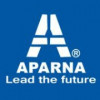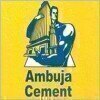Civil Site Supervisor
50+ Civil Site Supervisor Interview Questions and Answers
Asked in Veerteja Projects

Q. Which surveying method provides the most accurate earth measurements?
The survey for earth's measurement that needs to be done carefully is Geodetic Survey.
Geodetic Survey is a precise surveying method that takes into account the curvature of the earth and its gravitational field.
It is used to determine the exact location and elevation of points on the earth's surface.
This survey is important for construction projects, mapping, and navigation.
Errors in geodetic survey can lead to significant inaccuracies in measurements and calculations.
Example...read more
Asked in Veerteja Projects

Q. What are the reasons for a sudden structural failure?
Sudden failure of a structure can be caused by various reasons.
Poor design or construction
Natural disasters like earthquakes, floods, and hurricanes
Lack of maintenance and regular inspections
Overloading or exceeding the weight limit
Material defects or degradation over time
Environmental factors like corrosion or erosion
Human error or sabotage
Foundation issues or soil instability
Age of the structure
Inadequate safety measures
Improper use or modifications
Inadequate training or su...read more
Civil Site Supervisor Interview Questions and Answers for Freshers
Asked in Veerteja Projects

Q. What is the modular ratio of a designed concrete mix?
Modular ratio is the ratio of modulus of elasticity of steel to that of concrete in a reinforced concrete section.
Modular ratio is used to determine the stress distribution in a reinforced concrete section.
It is denoted by the symbol 'm'.
The value of modular ratio varies depending on the type of steel and concrete used.
For example, for mild steel and normal weight concrete, the modular ratio is typically around 280.
Modular ratio is an important factor in the design of reinfor...read more

Asked in Senco Gold

Q. Tell me about yourself.
I am a dedicated civil site foreman with extensive experience in managing construction projects and leading teams effectively.
Over 5 years of experience in civil construction, overseeing site operations.
Skilled in project management, ensuring timely completion of tasks.
Proficient in reading blueprints and technical drawings, facilitating accurate execution.
Strong leadership abilities, having successfully managed teams of up to 20 workers.
Experience in coordinating with subcon...read more
Asked in Veerteja Projects

Q. Why are deep beams used in building structures?
Deep beams are provided in building structures to resist high shear forces and bending moments.
Deep beams are used in structures where the span is large and the load is heavy.
They are used to resist high shear forces and bending moments.
Deep beams are also used to support heavy loads from columns or walls.
They are commonly used in parking garages, bridges, and high-rise buildings.
Deep beams can be designed as reinforced concrete or steel beams.
The depth of the beam is usually...read more
Asked in Mumbai Trans Harbour Link

Q. What are the responsibilities of a civil site supervisor?
A civil site supervisor is responsible for overseeing construction projects, ensuring compliance with regulations, managing workers, and maintaining safety standards.
Overseeing construction projects from start to finish
Ensuring compliance with building codes and regulations
Managing and coordinating workers and subcontractors
Monitoring progress and quality of work
Maintaining safety standards and implementing safety protocols
Preparing and submitting reports on project status an...read more
Civil Site Supervisor Jobs



Asked in Veerteja Projects

Q. What is the minimum thickness of steel plate required for a steel structure?
The minimum thickness of steel plate for a steel structure depends on various factors such as the load it needs to bear, the type of structure, and the design specifications.
The thickness of steel plate for a steel structure is determined by the load it needs to bear.
The type of structure also plays a role in determining the minimum thickness of steel plate.
Design specifications such as safety factors and material properties also influence the thickness of steel plate.
For exa...read more

Asked in Dineshchandra R. Agrawal Infracon

Q. Can you describe your knowledge of civil structures?
Civil structures refer to man-made constructions such as buildings, bridges, roads, and tunnels.
Civil structures are designed and constructed to withstand various loads and forces.
They are typically made of materials such as concrete, steel, and wood.
Civil structures must adhere to local building codes and regulations.
Examples of civil structures include skyscrapers, dams, and highways.
Share interview questions and help millions of jobseekers 🌟

Asked in Veerteja Projects

Q. Why is a plumb bob used in plane table surveying?
Plumbob is used in plane table survey to ensure verticality of the instrument and accuracy of measurements.
Plumbob is a weight attached to a string that hangs vertically from the center of the instrument.
It helps in ensuring that the plane table is perfectly vertical and the measurements are accurate.
Plumbob is used to mark the exact location of the survey point on the plane table.
It is also used to align the plane table with the true north direction.
Plumbob is an essential t...read more
Asked in Mumbai Trans Harbour Link

Q. What is the time period for concrete curing?
The time period of concrete curing work typically ranges from 7 to 28 days.
Concrete curing is the process of maintaining moisture and temperature conditions to allow the concrete to properly hydrate and gain strength.
The initial curing period is crucial and usually lasts for 7 days, during which the concrete should be kept moist and protected from extreme temperatures.
After the initial curing period, the concrete continues to gain strength over time, and a longer curing perio...read more
Asked in Veerteja Projects

Q. What percentage of steel is required in a slab?
The percentage of steel provided in a slab depends on the design and load requirements.
The percentage of steel in a slab is determined by the design and load requirements.
The steel reinforcement in a slab is typically placed in the bottom layer to resist tension forces.
The percentage of steel in a slab can range from 0.5% to 5% depending on the design.
The steel reinforcement in a slab is typically in the form of bars or mesh.
The steel reinforcement in a slab helps to prevent ...read more

Asked in Infra.Market

Q. How do you train your staff about casting?
Main apne staff ko casting ke liye training, workshops aur practical demonstrations ke zariye guide karta hoon.
Regular training sessions on casting techniques and safety protocols.
Hands-on workshops where staff can practice casting under supervision.
Use of visual aids and videos to demonstrate proper casting methods.
Encouraging team discussions to share experiences and best practices.
Conducting assessments to evaluate understanding and skills.
Asked in Veerteja Projects

Q. Indian hilly areas in uses of errigation method?
Hilly areas in India use various irrigation methods such as terracing, contour farming, and drip irrigation.
Terracing involves creating steps on the hillside to prevent soil erosion and retain water.
Contour farming involves planting crops along the contour lines of the hill to prevent soil erosion and retain water.
Drip irrigation involves providing water directly to the roots of the plants through a network of pipes and emitters.
Other methods include sprinkler irrigation and ...read more
Asked in Veerteja Projects

Q. What is the percentage of silica in Portland pozzolana cement?
The percentage of silica in Portland pozzolana cement is typically between 10-25%.
Silica is a key ingredient in cement and helps to improve its strength and durability.
Portland pozzolana cement is a type of cement that contains fly ash or volcanic ash.
The percentage of silica in cement can vary depending on the specific type and brand.
Excessive amounts of silica in cement can lead to health hazards for workers.
It is important for civil site supervisors to be aware of the comp...read more

Asked in Gagan Developers

Q. How would you handle delegating tasks to a team?
Need clarification on what 'it' refers to and what people are involved.
Ask for clarification on what 'it' refers to and who the people involved are.
Once you have a clear understanding, assess the situation and determine the best course of action.
Communicate effectively with all parties involved and ensure that everyone is on the same page.
Take ownership of the situation and be proactive in finding a solution.
Document the issue and the steps taken to resolve it for future refe...read more
Asked in Veerteja Projects

Q. Where is the moment of resistance used?
Moment of resistance is used in structural engineering to determine the maximum bending moment a beam can withstand before it fails.
Moment of resistance is used to design beams and columns in buildings and bridges.
It helps engineers determine the size and shape of the beam or column needed to support the weight and forces placed upon it.
Moment of resistance is calculated using the material properties of the beam or column, such as its cross-sectional area and the strength of ...read more
Asked in Veerteja Projects

Q. What is the minimum carbon percentage of mild steel?
The minimum carbon percentage of mild steel is 0.05%.
Mild steel is a low carbon steel.
It is also known as plain carbon steel.
The carbon content in mild steel ranges from 0.05% to 0.25%.
Mild steel is used in construction, automotive, and manufacturing industries.
Asked in Veerteja Projects

Q. What is the minimum cover for underwater RCC structures?
Minimum cover for underwater RCC structures depends on various factors such as water depth, exposure conditions, and concrete quality.
Minimum cover for underwater RCC structures is generally higher than that for above-water structures.
The cover should be sufficient to protect the reinforcement from corrosion due to exposure to water and other environmental factors.
Factors such as water depth, exposure conditions, and concrete quality should be considered while determining the...read more

Asked in L&T Construction

Q. 1. defferent between plasticizer and super plasticizer .? 2.MT capacity ? 3. Thickness of plaster.
Plasticizer and superplasticizer are both additives used in construction, but they have different properties and applications.
Plasticizer is used to improve the workability and flow of concrete by reducing water content.
Superplasticizer is a more powerful version of plasticizer, capable of significantly increasing the workability of concrete without increasing water content.
Plasticizer is typically used in applications where a moderate increase in workability is desired, such...read more

Asked in Aparna Constructions and Estates

Q. How does your yearly increment work?
My yearly increment is based on my performance and the company's financial performance.
My yearly increment is determined by a performance review process.
The company evaluates my performance based on my achievements, skills, and contributions.
The increment amount is also influenced by the company's financial performance and budget.
I have consistently received positive feedback and higher increments due to my exceptional performance.
For example, last year I received a 10% incre...read more
Asked in Veerteja Projects

Q. What are the nominal and maximum sizes of aggregate?
Nominal size is the size of the sieve that the material passes through, while maximum size is the largest particle size in the aggregate.
Nominal size is typically expressed as the sieve size that the material passes through, such as 3/8 inch or 10mm.
Maximum size is the largest particle size in the aggregate, and is typically expressed in the same units as the nominal size.
The maximum size of aggregate is important in determining the workability of concrete and the strength of...read more

Asked in Infra.Market

Q. How do you manage the work of site supervisors?
As a site supervisor, I ensure project efficiency, safety, and quality through effective management and communication on-site.
Plan daily activities and allocate tasks to workers based on project requirements.
Conduct regular safety inspections to ensure compliance with safety regulations.
Monitor project progress and report any delays or issues to the project manager.
Coordinate with subcontractors and suppliers to ensure timely delivery of materials.
Maintain clear communication...read more

Asked in Ambuja Cements

Q. What do you know about cement?
Cement is a binding material used in construction to create concrete and mortar.
Cement is a fine powder made from a mixture of limestone, clay, and other minerals.
It is the key ingredient in concrete, which is used for building foundations, walls, and structures.
Cement reacts with water to form a paste that hardens and binds the aggregates together.
Different types of cement are used for specific applications, such as Portland cement for general construction and sulfate-resist...read more

Asked in One Realty

Q. What is the initial setting time of cement?
Initial setting time of cement is the time taken by cement to harden and attain a particular strength.
Initial setting time is the time taken by cement to harden and attain a particular strength.
It is the time from the moment water is added to the cement until the paste starts losing its plasticity.
The initial setting time of cement is generally around 30 minutes to 1 hour.
It is an important property of cement as it determines the time available for mixing, transporting, and p...read more
Asked in Veerteja Projects

Q. What causes the yellow color of bricks?
Yellow colour of bricks is due to the presence of iron oxide.
Iron oxide is a common ingredient in clay used to make bricks.
The amount of iron oxide present in the clay determines the shade of yellow.
Bricks can also be artificially coloured yellow using pigments.
Yellow bricks are popular in construction due to their aesthetic appeal.

Asked in Masstech Business Solutions

Q. How do you calculate the number of blocks needed for a project?
To calculate the number of blocks, determine the area to be covered and divide it by the area of one block.
Determine the area to be covered
Determine the area of one block
Divide the area to be covered by the area of one block
Round up to the nearest whole number
Add 10% to account for waste

Asked in GMR Group

Q. What is a foundation?
The foundation is the lowest part of a building, typically below ground level, that supports and anchors the structure.
The foundation distributes the weight of the building and prevents settling or movement.
There are different types of foundations, such as shallow foundations (e.g. strip, raft) and deep foundations (e.g. piles, caissons).
The type of foundation used depends on factors like soil conditions, building size, and load-bearing requirements.
Asked in Ghanaram Infraengineers

Q. How would you improve plant dumping work for a railway project?
Effective planning for piling work in a railway project ensures safety, efficiency, and adherence to timelines.
Conduct a site survey to assess soil conditions and determine the type of piling required.
Develop a detailed schedule that includes timelines for each phase of the piling work.
Coordinate with other teams to ensure that piling work does not interfere with other construction activities.
Implement safety measures, such as proper signage and barriers, to protect workers a...read more

Asked in Dalmia Bharat Cement

Q. What are OPC and PPC?
OPC stands for Ordinary Portland Cement and PPC stands for Portland Pozzolana Cement.
OPC is a type of cement that is commonly used in construction.
It is made by grinding clinker with gypsum.
OPC is known for its high strength and durability.
PPC is a type of cement that contains pozzolanic materials like fly ash or volcanic ash.
It is known for its ability to improve workability and reduce the heat of hydration.
PPC is often used in areas where there is a need for low heat of hyd...read more
Asked in Veerteja Projects

Q. What is the behavior of sand during an earthquake?
During an earthquake, sand can liquefy and lose its strength, causing instability in structures.
Sand can behave like a liquid during an earthquake, a phenomenon known as liquefaction.
This can cause the sand to lose its strength and stability, leading to potential damage to structures built on top of it.
Civil site supervisors should be aware of the potential for liquefaction and take appropriate measures to ensure the safety of structures.
These measures may include soil stabil...read more
Interview Questions of Similar Designations
Interview Experiences of Popular Companies








Reviews
Interviews
Salaries
Users

















